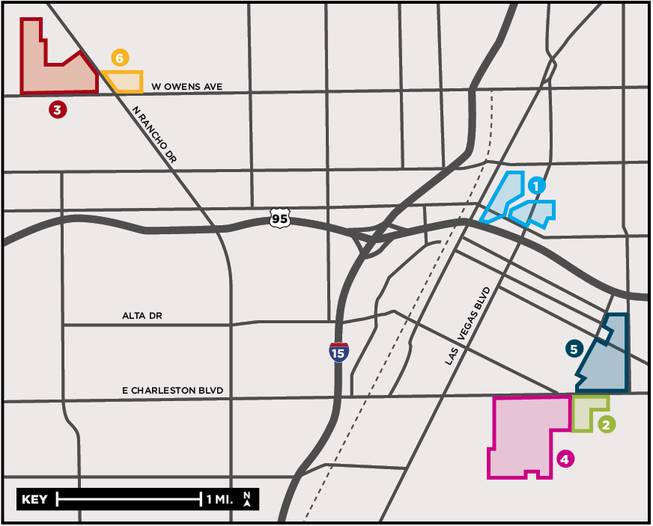Sunday, Aug. 9, 2015 | 2 a.m.
What is the National Register of Historic Places?
Established in 1966 and administered by the National Parks Service, the National Register of Historic Places is the official list of the nation’s historic places worth preserving. Properties or neighborhoods listed on the register also can qualify for tax incentives. For example, downtown’s Mob Museum received about $8 million in credits to convert the Las Vegas Post Office and Courthouse. Placement on the national register doesn’t come with additional restrictions on property owners, although a separate local register requires Las Vegas homeowners to receive city approval before making major modifications to historic properties.
In a city famous for imploding its past to make way for its future, Las Vegas is beginning to do something virtually unheard of here — hanging on to its historic neighborhoods.
The city is considering which of six neighborhoods built during the 1940s should be nominated for designation on the National Register of Historic Places.
Why preserve the homes?
Courtney Mooney, Las Vegas’ historic preservation officer, said the neighborhoods tell the story of how Las Vegas was born.
“It’s important to have ownership of your community,” Mooney said. “When things change all the time, people tend to lose that historical anchor.”
Although the aging, single-story houses likely won’t grace the cover of Architectural Digest, they document the city’s transition during the middle of the last century from a small desert outpost to a fledgling burg. Most of the homes were built during World War II using federal housing funds funneled to cities of military importance. In Las Vegas, the money was used to build housing for non-commissioned officers and civilian employees working at Las Vegas Army Air Corps Gunnery School, now known as Nellis Air Force Base, and at the Basic Magnesium Plant in what is now Henderson.
The homes generally share a minimal traditional architectural design, the predominant style at the time, characterized by rectangular buildings with horizontal, symmetrical facades, low-pitched roofs and small front porches.
The city held a public meeting last month to gauge neighborhood interest in pursuing the historic designations. With a limited amount of grant money available, the city can nominate only one district for historic designation.
Once a neighborhood is nominated, being placed on the National Register of Historic Places typically takes one to two years.

1. Biltmore
This downtown neighborhood started in 1941 on land owned by Union Pacific Railroad. The neighborhood has remained largely unchanged since construction was finished in 1950, although many of the single-family homes have been converted to duplexes or fourplexes.
2. Charleston Square
Charleston Square was envisioned as a housing development for returning World War II veterans receiving G.I. Bill benefits but was converted to nonveteran housing when the project ran into financial trouble. The neighborhood is notable for having one of the area’s first homeowners associations — with additions and fences requiring approval from a committee of homeowners.
3. Eastland Heights
The neighborhood is named for one of its founders, Van Eastland, who moved to Las Vegas to work on the Hoover Dam. Eastland later did civil engineering and surveying for several World War II-era subdivisions, including Biltmore, Huntridge and Sebec Acres. Planned as a 40-acre, golf course-adjacent subdivision where a house would cost no more than $5,000, the area today is a mix of homes and commercial businesses.
4. Huntridge
The largest of Las Vegas’ early neighborhoods, its blueprints called for a school, theater and shopping center within walking distance of homes. The neighborhood’s progressive design was meant to avoid the “mining town” aesthetics of earlier housing developments.
5. Mayfair
When construction started in 1942, developers promised a host of modern luxuries to homebuyers — electric heat, air conditioning and attached garages. Advertisements for the neighborhood even touted “unobstructed views of the Las Vegas Valley.” Today, the area includes 326 residential and commercial buildings, although many of the original homes are on the verge of condemnation.
6. Sebec Acres
Designed in 1941 by William Smith, Las Vegas’ first veterinarian, and his wife, Zina, this single-block neighborhood was outside city limits before being annexed. Of the first 12 properties, which were single-family homes from 450 square feet to 2,000 square feet, only nine remain. Four still are used as residences.

Join the Discussion:
Check this out for a full explanation of our conversion to the LiveFyre commenting system and instructions on how to sign up for an account.
Full comments policy